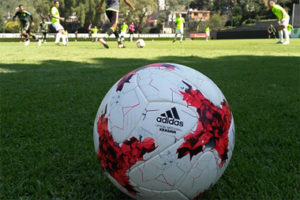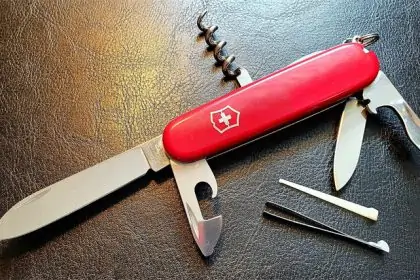In two days the Football World Cup in Russia starts – high season also for counterfeiting. With a new customs alliance China-Russia in 2018, both countries want to put a stop to product piracy.
FIFA World Cup ist high season for piracy
 World Cup jerseys and shirts, soccer balls, soccer shoes and general sportswear of brand manufacturers: counterfeit goods and product piracy are a billion dollar business. For the German sports manufacturers Adidas and Puma, this means major losses. Every year, six to seven million counterfeit Puma products were confiscated, and 12 million counterfeit Adidas products were seized, the German newspaper “Süddeutsche” reported at the 2014 World Cup. To protect FIFA’s exclusive right to World Cup brands, logos and designs and to put a stop to the known increase in product piracy, two countries have joined forces in a cooperation whose rapprochement is also being observed with vigilance at the political level: China and Russia.
World Cup jerseys and shirts, soccer balls, soccer shoes and general sportswear of brand manufacturers: counterfeit goods and product piracy are a billion dollar business. For the German sports manufacturers Adidas and Puma, this means major losses. Every year, six to seven million counterfeit Puma products were confiscated, and 12 million counterfeit Adidas products were seized, the German newspaper “Süddeutsche” reported at the 2014 World Cup. To protect FIFA’s exclusive right to World Cup brands, logos and designs and to put a stop to the known increase in product piracy, two countries have joined forces in a cooperation whose rapprochement is also being observed with vigilance at the political level: China and Russia.
Customs Alliance between China and Russia
Since the first of March and initially for a period of four months, the so-called China and Russia Customs Joint enforcement action on the protection of intellectual property rights has been formed. The common goal is to strengthen the protection of intellectual property rights for FIFA and relevant sponsors. In particular, a risk assessment of goods on important routes and key areas for the World Cup was carried out in order to be able to take targeted action against counterfeiters and piracy products – even when counterfeit goods are exported from China.
And there have been successes: approx. 130,000 allegedly infringing goods have so far been confiscated by Chinese customs, including piracy products that primarily infringe the rights to “Russia 2018” and “ADIDAS“, but also the mosaic graphics on footballs protected by Adidas. In April, for example, Shanghai Customs confiscated 2,000 fake World Cup footballs bearing the “RUSSIA 2018” brand.
Protection against counterfeiting
Despite the successes, there is still room for improvement: Brazilian customs sorted out more than 200,000 fake balls in the days leading up to the 2014 World Cup alone. The IPM Connected database of the World Customs Organisation WCO, which also includes China and Russia with their customs administrations, is certainly useful in this context. Customs employees can request information via smartphone whether a suspicious product is counterfeit. How to protect against counterfeiting? The most important is securing of one’s own protective rights. The registration of trademarks, designs and patents should be made for your own country and for all other relevant sales markets as well.
Maybe these articles are also interesting for you:
- Info Blog: Trademark law – MESSI is distinctive
- Info Blog: Brand protection on packaging – Dior wins in China
- Info Blog: Adidas vs. FC Barcelona and The Power of the Three (registered) Stripes
Are you interested in brand or trade mark protection?
Please take your chance and contact us. Our lawyers are experienced in trademark and patent law, national and international law.
Sources:
Picture:
weroarnau /pixabay.com / CCO License








Leave a Reply